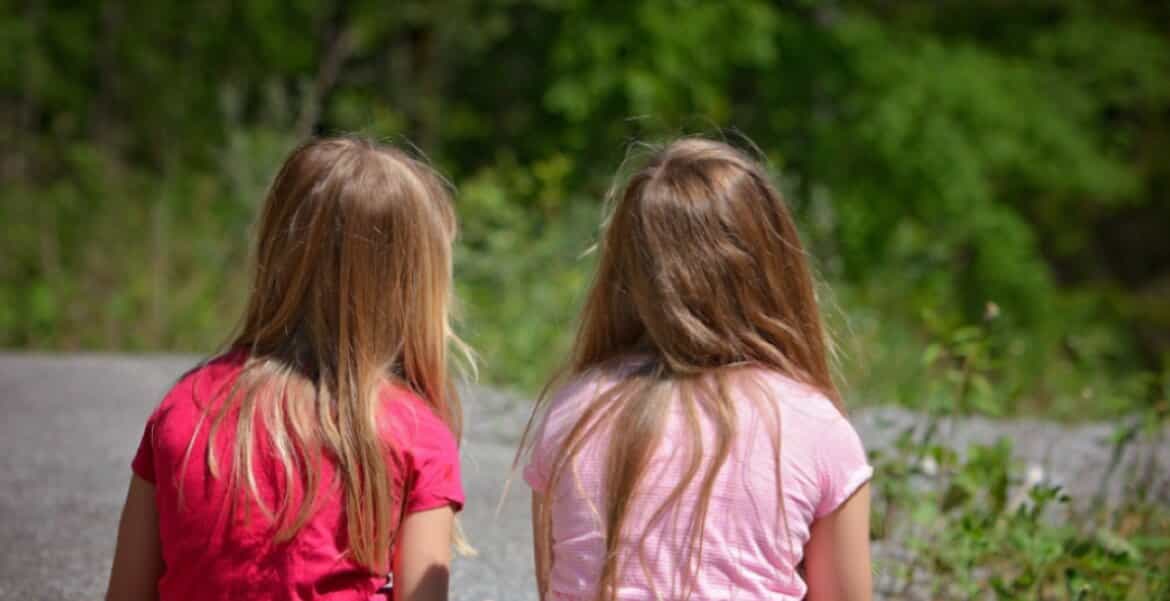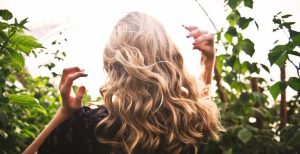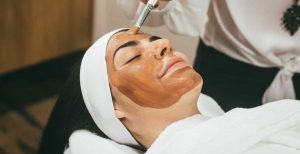Parents everywhere fear the dreaded Head Lice and Essential Oils are often recommended to treat them.
But can you really use Essential Oils to treat Head Lice? Are they safe? And are they a real alternative to treating head lice naturally without using harsh chemicals?
From what I have been hearing from parents, one of the unexpected benefits of home schooling during the last year has been not having to deal with outbreaks of head lice!
But with schools now back to face-to-face learning, many parents seem to be anticipating a return of this dreaded foe.
Many parents worry about using harsh chemical treatments on their children’s hair to deal with head lice. And it has been said that head lice are becoming resistant to some of the conventional treatments. So what to do?
Before I had my own daughter my experience of treating head lice was purely theoretical. I knew from my aromatherapy studies what SHOULD work. But it was only when I was confronted with the reality of the situation that this was put to the test. And I then formulated my own program for dealing with them. I was, I admit, extremely lucky that we discovered our first head lice at the very beginning of a school holiday period. So I had the luxury of a couple of weeks where we could hibernate, try a few things out and see what worked!
There are many ideas of how to treat head lice – this is simply what worked for us.
The first thing to note is some basic information about head lice themselves.
- Head lice are small wingless insects that live and feed on the human scalp. They have coexisted with humans, for thousands of years.
- Head lice may seem pretty disgusting, they do not spread disease. Neither are they a reflection on anyone’s level of hygiene. There is no evidence to support head lice preferring either clean or dirty hair.
- Head lice cannot jump or fly. They spread by crawling from one person’s head to another. They can live for only a short time off the head. However as children often play close together or sit close together at school, head lice can easily spread in those settings. Which is why we tend to see head lice more in pre- and primary school age groups.
- Head lice will lay several eggs over a few days. The eggs then take a few days to hatch. And then a few more days before these lice can lay eggs of their own. These periods of time affect how we treat for head lice.
- If you find lots of head lice in your child’s hair, I am afraid to say that they have most likely been there for a while. It is not likely that your child has “suddenly” acquired a thriving colony of head lice in one day. It is much more likely that you are experiencing a “baby boom” as a result of eggs left behind by a previous crop. This often seems to happen when people treat lice but inadvertently miss some. You may think your child has brought home a new crop of head lice. But it is more likely you have simply missed some eggs and these have all since hatched. Having said all that it is very very easy to miss a few lice or eggs in your child’s hair. Especially if their hair is very long, thick or curly. It is understandable – so don’t beat yourself up if you think this may be you.
- There is no miracle treatment that will get rid of all head lice instantly and allow you to forget about it for months. Sorry! There are a few steps and some ongoing maintenance that you need to resign yourself to in order to get on top of the situation.
So if you find someone in your house has head lice, what to do?
There are a number of chemical treatments on the market to treat head lice. Some people may find these helpful. But I have had feedback from others who find them less effective. And as I said earlier, there are also concerns that head lice may be becoming resistant to some of these chemicals.
This is why for many people look for a more natural treatment for head lice and essential oils are one of the most popular. I have found essential oils to be very useful. But they are not the only element in the treatment regime I developed for us.
Head Lice and Essential Oils – The Treatment Phase
One of the most important things I have learned is that the initial focus should be more on removing rather than killing the lice. It is not just head lice where we have this assumption in our society that killing the “bug” is the most important thing to do. As many of us have learned during the past “covid year” washing our hands with any soap is perfectly effective – there is no need to use antibacterial or antiseptic soaps. Any soap will work to remove the virus from the skin. (Unless you don’t have access to hand washing facilities, which is when hand sanitisers come into their own. But that’s another story.)
The same applies to head lice. Getting them off the head is the aim – once they are removed, they won’t survive very long anyway.
Step 1
Firstly, get yourself some conditioner . (Unscented is fine or whatever you have on hand.) You will also need a head lice comb with the long metal teeth. (The plastic ones are, in my opinion, much less effective.)
You can use any conditioner. Even a plain unscented one is fine. If you are using an unscented conditioner, you can add some essential oils at the rate of 2-3 drops of essential oil per tablespoon of conditioner. I liked to use Tea tree and Lavender Essential Oils. But you can also use Rosemary or Geranium. Adding any essential oil is just personal taste. A plain conditioner is absolutely fine for this stage of treatment.
Step 2
Saturate the hair (which can be wet or dry) with conditioner from root to tip. (And I do mean saturate – don’t be shy! You want plenty of conditioner on the hair to help find the head lice. It also makes the hair easier to comb and therefore the process will be less stressful for you and your child.)
Step 3
Starting at the nape of the neck, (hold the rest of the hair out of the way with a clip or similar) take very small sections of hair and work though each with your comb. Make sure you comb from right up against the scalp and all the way to the ends of the hair. Wipe off the conditioner onto a tissue or paper towel as you go, checking for lice which should show up fairly easily.
The conditioner works by temporarily immobilising the lice, rather than killing them, allowing you to locate and remove them. There is therefore no need to wait for the conditioner to work. You can get started with combing as soon as the conditioner has been applied. (The conditioner also helps to make it easier to get through the hair. And this is especially important if the hair is long and/or curly!)
Step 4
When you have finished combing out all of the hair, wash out any remaining conditioner and dry hair as usual.
Now I will acknowledge that this can take time. And not all kids (especially the younger or more active ones!) may be happy to sit still for very long. So do yourself a favour and set yourself up with some distractions before you start treatment. Your child’s favourite show on tv, books, drawing materials, video game – whatever will hold your child’s attention. Your child may do better with an incentive of a reward once the routine is over – you know your child best! But don’t feel bad for using a bit of bribery if it works. This stage is not pleasant so do what you need to do to get you both through it!
Having worked through all the hair, if you have not found any head lice, Great! You can move on to the maintenance section.
However if you do find any head lice, repeat this process every 2 -3 days until you have not found any live head lice for at least a week. Then move on to the maintenance section.
This is really important. This method will remove the actual lice. But removing the eggs is much harder as they are “glued” to the hair shaft. However by repeating the treatment at relatively short intervals, you can catch any newly hatched lice before they mature enough to lay their own eggs – so breaking the cycle. So please don’t skimp on this step.
If you do find any lice, I would also check everyone else in the house in the same way. The experts say that you don’t need to wash all the household linen or do other household disinfection, other than washing the affected person’s (or people’s) pillowcase/s. Remember, head lice can’t survive for long off the human head. So save your energies for those items that have spent time on or next to the head of the person with the lice.
You will also need to notify anyone your child has had direct head to head contact with so they can also check for head lice. Some states also require children to be excluded from school until treatment commences. Check your own states rules.
Head Lice and Essential Oils – The Maintenance Phase
This is the process we followed once we were (apparently) “Lice free”.
Once a week we would re-do the conditioner check treatment (usually on a weekend so we could make sure we were lice free before school on Monday) . No lice? Great! Another week to relax.
If we did find anything (and this only happened a couple of times) it was only ever one or 2 lice, so we would go back to the treatment regime – conditioner every 2 days until we had gone a week without seeing any. Then back to the maintenance phase once again. With such small numbers, we could get on top of them before they had the chance to settle in and lay eggs. So the treatment time was consequently very short. We were never conditioning every 2 days for weeks on end!!
I also introduced an essential oil shampoo to the whole family. You can make this by adding Lavender and Rosemary Essential Oils to an Unscented Shampoo Base. (I use 10 drops each of Lavender and Rosemary Essential Oils to every 100ml of Shampoo Base.)
In addition every day before school, after I tied my daughter’s hair back in a ponytail or plait (depending on the preference of the day!) Then I would spray her hair with a special mix that I kept made up. As she got older, she was able to do this for herself.
The recipe I used mixed 1 teaspoon of Essential Oil Dispersant with 10 drops each of Lavender Essential Oil and Tea Tree Essential Oil in a 100ml Spray Bottle. Then fill the remainder of the bottle with Lavender Hydrosol (approx. 95ml). Shake well to mix. Spray on the hair, avoiding the face and particularly the eyes.
By doing all of these steps, we never had another infestation like the first, even when there were outbreaks of head lice at school. (Which can tend to occur quite regularly!)
And I never had to use any harsh chemicals on my daughter’s hair. A relief for her and for me.
It does take time and care to do this routine, I know. But the ongoing maintenance was a lot less time consuming and considerably less stressful on the whole family (!) than the first time we had to deal with lice.
Following this routine can help you get on top of head lice and essential oils are an integral part of this.




